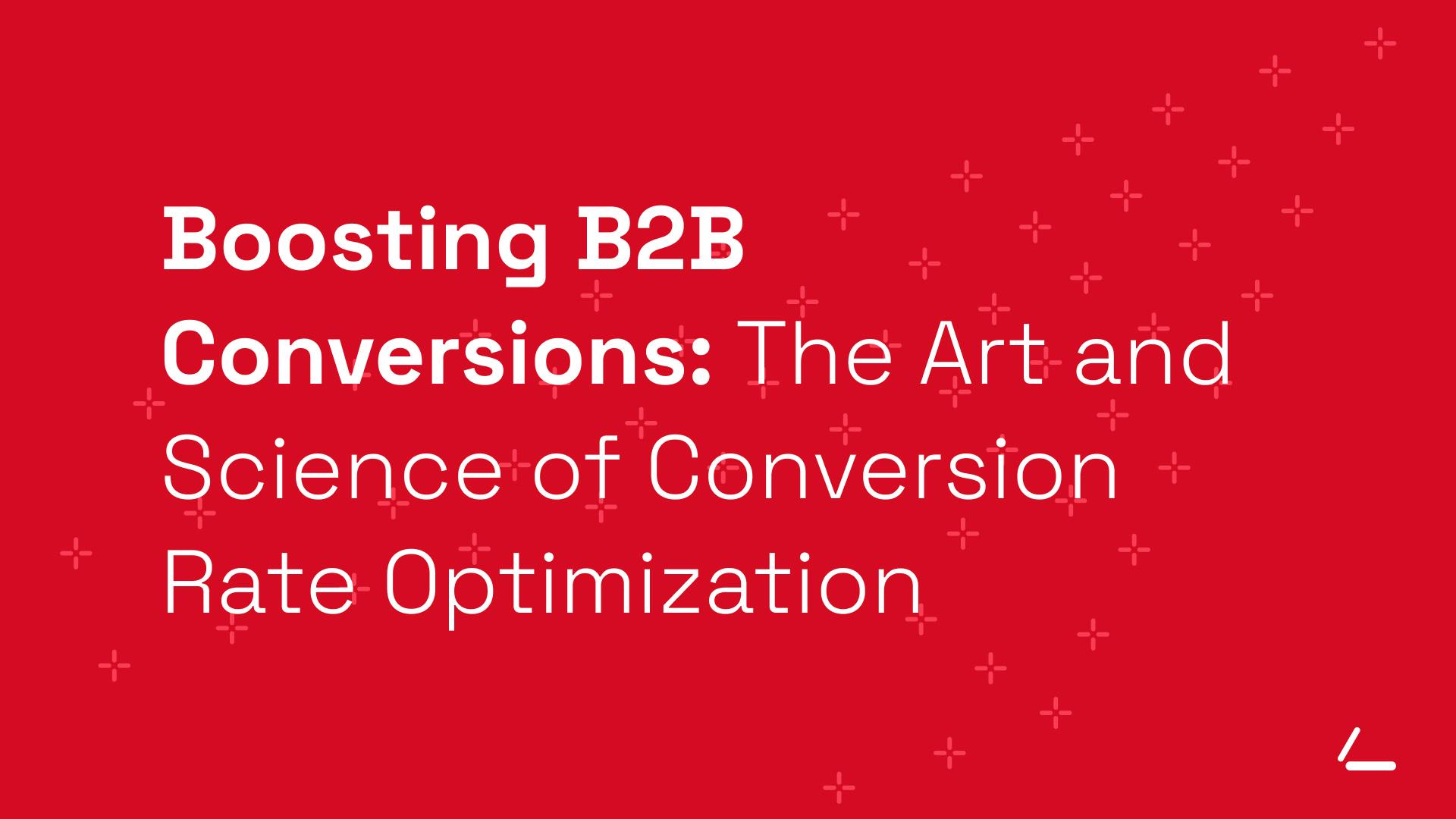Boosting B2B Conversions: The Art and Science of Conversion Rate Optimization

When it comes to boosting B2B conversions, there is both an art and a science to Conversion Rate Optimization (CRO). Understanding the fundamentals of CRO is key to creating successful campaigns that will keep your target market coming back for more. In this blog, we'll explore the strategies behind conversion rate optimization, and how you can use them to get the most out of your marketing efforts.
Here are a few key points to better understand improving your conversion rates.
First, what is CRO?
Conversion rate optimization (CRO) is a process of optimizing existing content, visuals and messaging to increase the likelihood that website visitors will “convert” into customers. It involves analyzing user behavior, testing different versions of web pages and trying out different strategies in order to determine what works best for your target audience.
CRO can help you improve the performance of your landing pages, email campaigns and other digital assets by driving more conversions such as sign-ups, sales or form submissions. By taking advantage of tactics that improve conversion rates, businesses can effectively drive better results from their marketing efforts.
By taking advantage of CRO tactics, you can improve the performance of your website and maximize the results from all your digital marketing efforts. Ultimately, this will help you drive more sales and increase revenue for your business. With a carefully planned strategy and an iterative approach to optimization, you can achieve significant improvements in conversions and ROI from your website visitors.
Steps of conversion optimization
The steps of conversion optimization typically involve analyzing user behavior, creating different versions of webpages and testing them to determine which version works best for your target audience. The first step is to identify areas on your website that could be improved in order to drive more conversions. This includes looking at page design, content, visuals and user flow.
Once you have identified some opportunities for improvement, it’s time to start testing. You can test different versions of content or visuals by creating multiple variations and implementing A/B testing to compare the results. This will help you determine which version resonates most with your visitors and drives the highest number of conversions.
Finally, it’s important to continuously monitor the performance of each test and adjust as needed. This will ensure that you’re always optimizing your website and getting the best results from your visitors.
By following these steps, businesses can effectively optimize their websites to drive more conversions and maximize the return on their digital marketing efforts.
What is the formula for conversion rate optimization?
The number of conversions (desired actions taken) is divided by the total number of visits, and the resulting number is multiplied by 100 to produce the conversion rate as a percentage. For example, if a website has 1,000 visits and 10 conversions, the conversion rate is 1%.
Conversion rate optimization involves understanding what factors are preventing visitors from taking action on your site. It could be anything from a slow loading website to difficult navigation or an unattractive design. By testing different elements of your website, you can improve your conversion rate and maximize the return on investment of your web traffic.
Key elements include Improving user experience and optimizing the look and feel of your webpages. This includes making sure users find what they need quickly and easily; creating simple checkout processes; improving site speed; eliminating pop-ups; providing attractive visuals, calls-to-action (CTAs); and designing engaging content that encourages users to take action. With careful optimization, you can increase conversions and improve the overall performance of your website.
Want to Learn more?
Want to learn more about how our team can help improve your website's performance? Book a meeting with our calendar tool today because our success depends on yours.